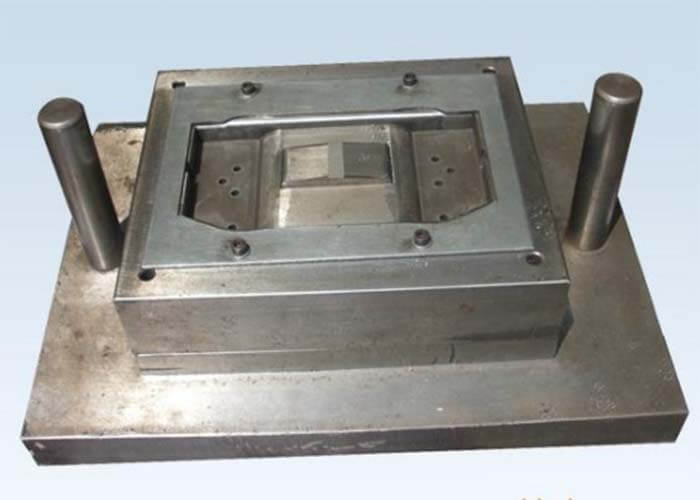Why is stamping die maintenance needed?
To prolong the service life of the stamping die, stamping die maintenance and upkeep must be in place. Otherwise, it not only affects the service life of the die but also affects the quality of the stamping parts.
Although the mold precision and mold structure have made a significant breakthrough. However, the later die use and die maintenance aspects have not been done in place.
This invariably increases the stamping die manufacturing and stamping die maintenance cost and also adds some unnecessary production costs to the enterprise. The stamping dies maintenance and repair of the die and mold should first identify the technical state of the dies and molds, followed by the maintenance and repair of dies and molds, and finally the repair of dies and molds.
Mold technical status appraisal
The necessity of mold technical condition appraisal
In the process of mold use due to improper installation or use of the mold on the machine tool, natural wear and tear of mold parts and equipment failure, etc., will make the mold components lose their original precision, resulting in the quality of the parts and production efficiency is affected.
Therefore, in the use of the mold, one must take the initiative to grasp the changes in the state of the mold, and seriously and timely to deal with it, so that it often works in good condition.
At the same time, through the timely technical status appraisal of the mold, we can grasp the degree of wear and tear of the mold as well as the cause of mold damage, to formulate the repair content and repair plan, which is also very important to prolong the service life of the mold and reduce the cost of the product parts.
The method of mold technical condition appraisal
Mold technical state identification, generally speaking, for the newly manufactured mold and after the repair of the mold is through the test mold to identify, while the use of the mold is through the quality of the parts and mold work performance inspection to identify the technical state.
The main purpose is to ensure the accuracy of the mold, to make the mold always work in good technical condition, to maximize the life of the mold, and to prevent the defects of the mold. Even if problems are found, it is possible to put forward modified treatment opinions for the die and guide the production more safely and reliably.
How does the stamping die maintenance?
First-level maintenance stamping dies maintenance
Die maintenance during mold loading
(1) Before mounting the die, clean the upper and lower surfaces of the die to ensure that the die mounting surface and the press table are not damaged by compression and that the upper and lower mounting surfaces of the die are parallel in production.
(2) After installing the die, open the die, clean, and wipe all parts of the die, especially the guiding mechanism. Clean the surface of the mold, ensure the quality of the parts, and lubricate and grease all sliding parts of the mold. Check all parts of the die, especially safety parts such as safety side pins, safety screws, side plates, and punching waste channels.
Die maintenance in production
(1) In production, the parts used in the die need to be greased regularly, the parts include the compression ring and rounded corner of the drawing die, the edge of the trimming die, etc.
(2) Regularly clean the small hole scrap of trimming die hole.
Post die maintenance
(1) When the equipment is finished being used, the die needs to be inspected.
(2) Clean the die completely to ensure the cleanliness of the die.
(3) Clean up the waste inside the die to make sure there is no waste in the waste bin.
(4) Observe the die in real-time and after use.
Secondary-Level Stamping Die Maintenance
The maintenance work is done by the die maintenance personnel and recorded according to the maintenance. The following are the requirements and methods for the secondary maintenance of different mold components.
Drawing die convex die and concave die
In the stamping die maintenance process, the rounded and drawn part of the die is mainly polished. If there are pressure pits, the die should be repaired.
The main reason for the appearance of pull marks and other phenomena is unclean lubricating oil and guide gap with deviation, and the guide components produce pull marks, which are eliminated by the polishing method after pushing in with oil stone.
Trimming knife-edge
In the process of using the mold, the edge part of the mold is prone to chipped edge and edge collapse phenomenon. At this time, the damaged cutter edge of the mold should be repaired.
Mold spring and other elastic parts
Mold spring is a part of the mold that is easily damaged during use, usually by breaking and deformation. The method used is to replace them, but when replacing them, you need to pay attention to the specification and type of the mold spring. The specification and type of the mold spring are determined by the color, outer diameter, and length, and the mold spring can be replaced only if these three conditions are the same.
Most of the punches and bushings used in molds are standard components. In the process of using molds, punches are easily broken, bent, and gnawed, and bushings are usually gnawed, and damage to punches and bushings is usually replaced by components of the same specification.
Fasteners need to be checked frequently for looseness and damage, by finding parts of the same specification for replacement.
You may also be interested in the below articles.
Summary Of 50 Injection Mold Structure Operation Dynamic Diagrams
Auto Parts Stamping Die Design Concept




